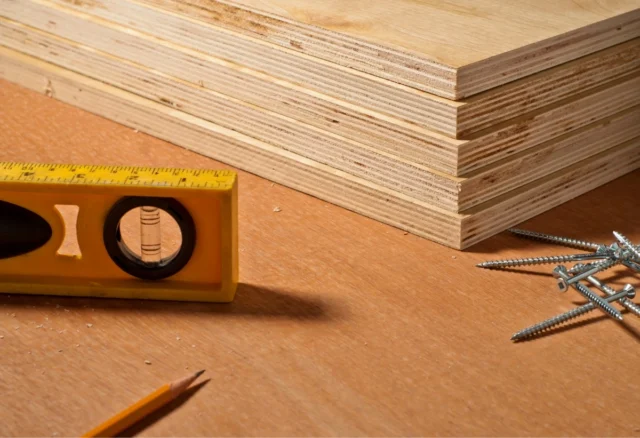Introduction
When it comes to building or renovating your home, choosing the right materials is crucial for ensuring durability, cost-effectiveness, and overall structural integrity. One material that often comes into consideration is plywood. In this blog post, we’ll delve into the pros and cons of using plywood as a building material for your house.

Pros:
- Strength and Durability: Plywood is known for its strength and durability. It is constructed by layering thin sheets of wood veneer, each laid perpendicular to the previous one. This cross-grain construction gives plywood its strength, making it a reliable choice for various applications in construction.
- Versatility: Plywood is a versatile material that can be used for a wide range of purposes, including flooring, roofing, walls, and furniture. Its versatility makes it suitable for both structural and decorative elements in a home.
- Cost-Effective: Compared to some alternative materials, plywood tends to be more cost-effective. It offers a good balance between affordability and performance, making it an attractive option for budget-conscious homeowners.
- Resistance to Warping and Cracking: Plywood’s cross-grain construction also contributes to its resistance to warping and cracking. This characteristic is especially beneficial in areas with varying humidity levels.
Cons:
- Susceptibility to Moisture: While plywood is resistant to warping, it is still susceptible to moisture damage. In humid environments or areas prone to water exposure, additional precautions and treatments may be necessary to prevent decay and mold growth.
- Formaldehyde Emissions: Some types of plywood may contain adhesives with formaldehyde, a substance known to emit volatile organic compounds (VOCs). Homeowners concerned about indoor air quality should seek plywood labeled as low-VOC or formaldehyde-free.
- Appearance: Plywood’s appearance may not appeal to everyone, especially when used in visible areas without proper finishing. However, advancements in manufacturing have led to the availability of ply with more aesthetically pleasing finishes.
- Weight: In comparison to certain alternatives like particleboard, ply can be heavier. This can be a consideration in projects where weight is a critical factor.
Conclusion: In weighing the pros and cons of using ply as a building material for your home, it’s essential to consider your specific needs, budget, and the environmental conditions of your location. While ply offers various advantages, understanding its limitations and taking appropriate precautions can help ensure a successful and long-lasting application in your home construction or renovation project.
To More About: – BWR & BWP.


